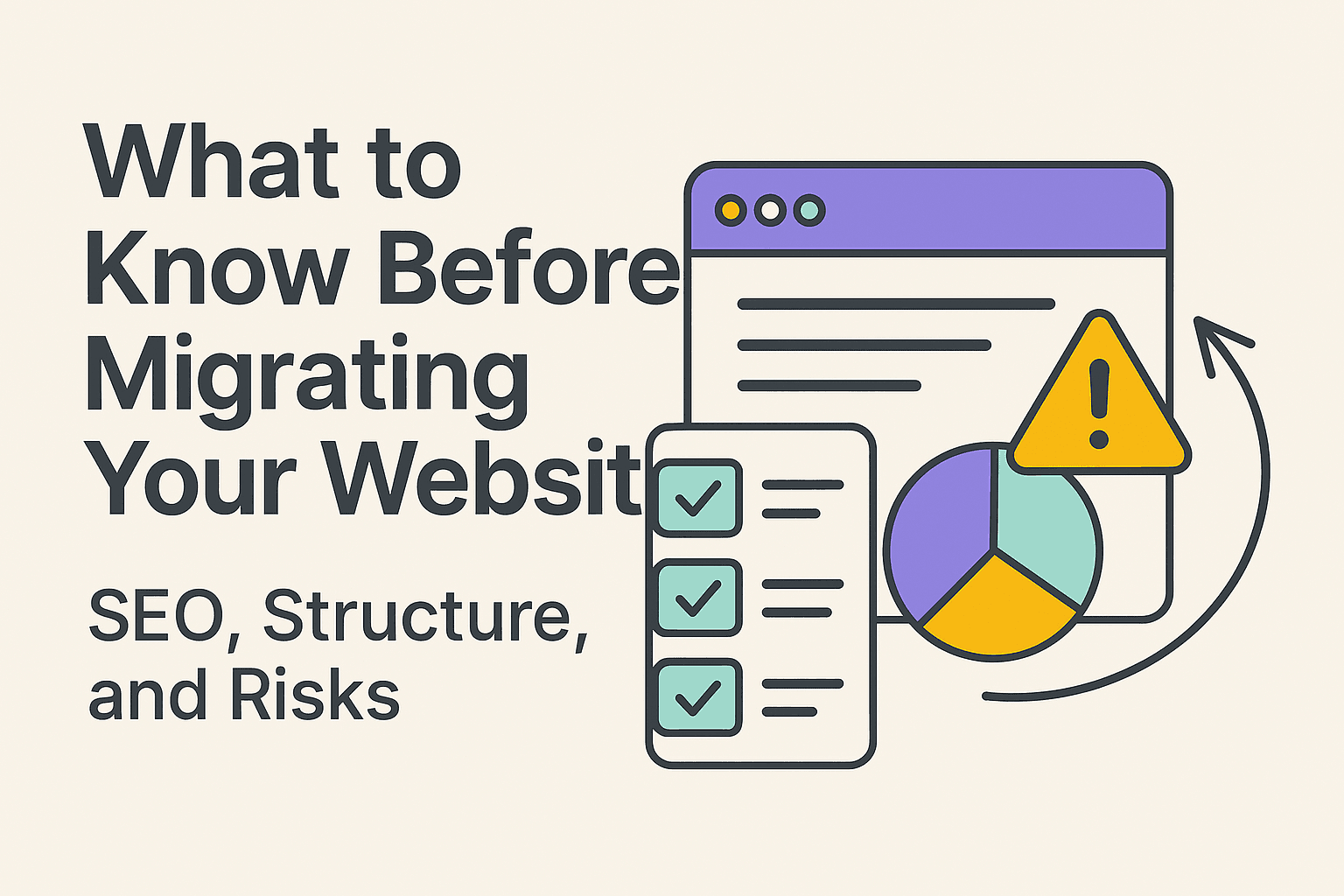What to Know Before Migrating Your Website: SEO, Structure, and Risks

Migrating a website is not just about moving files from one place to another. It’s a sensitive operation that can make or break your site's visibility, especially when you care about things like Google rankings, backlinks, and user experience. I’ve been through this process recently, and I want to share my thoughts, so you don’t repeat the mistakes.
Let’s go step by step.
Does Migration Impact SEO?
Absolutely. If you’re moving from WordPress to a custom platform like Strapi or Next.js, you must remember that Google doesn’t care about your technology—it only cares about URLs, meta tags, performance, and content consistency.
During migration, search engines might get confused if:
- URLs change and redirects aren’t done properly.
- You forget to keep the same meta titles, descriptions, and slugs.
- Published dates are missing or incorrect.
- Page performance drops because of poorly optimized images or scripts.
The Essentials of a Clean Migration
Let’s talk about what should be in place for a smooth transition:
✅ Keep your URLs identical
If your old blog post was at:
https://yourwebsite.com/lessons/how-to-migrate
Your new site must use the same URL structure. If not, you need to set up 301 redirects properly.
✅ Preserve meta tags and SEO data
Meta titles, descriptions, Open Graph (OG) tags, Twitter cards — all of these need to match your old site. Otherwise, you risk losing SEO power that you built over time.
✅ Use proper canonical URLs
Canonical tags help Google understand which URL is the primary one. Even if you have filters, pagination, or languages, set the canonical to the main URL.
✅ Mind the published date
Google loves fresh content, but it also respects old content when the dates are consistent. If your original post was published in 2023, keep that date in your metadata and schema!
✅ Test performance
Page speed matters. Use tools like Google PageSpeed Insights to make sure you’re not making your new site slower than the old one. Optimize images, scripts, and use lazy loading where needed.
Common Mistakes During Migration
- Forgetting redirects. Without proper 301 redirects, your users and search engines will see broken links.
- Missing metadata. Default titles and descriptions like "Create Next App" won't help your SEO.
- Duplicate content. Avoid duplicating posts or pages that can confuse search engines.
- Skipping sitemap updates. Make sure you generate and submit a fresh sitemap to Google Search Console.
Should You Refresh the Content Too?
Yes, but carefully. Updating outdated parts of your content is fine. But avoid changing the entire page too much at once, or you might lose your SEO signals. Migration is already a big change.
My Recommendation
If you’re thinking of migrating your site:
- ✅ Start by auditing your current pages and structure.
- ✅ Prepare your SEO templates before launching.
- ✅ Keep track of published dates, titles, descriptions, and URLs.
- ✅ Use 301 redirects from day one.
- ✅ After migration, monitor Google Search Console for any crawl errors.
And most importantly: take your time.
It’s tempting to rush because you want to leave behind the old platform. But in this case, moving too fast can cost you months of traffic recovery. A slow, careful migration is always better than a quick but sloppy one.
I've learned this lesson the hard way, and I hope this helps you avoid unnecessary risks!
Balance speed with precision, and you’ll keep your rankings safe.
P.S. If you're unsure about your migration or want professional help, I'm available! Take a look here: Web Design & Migration Help